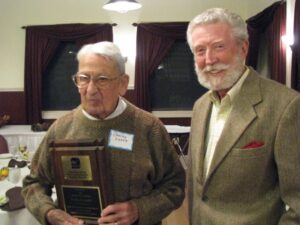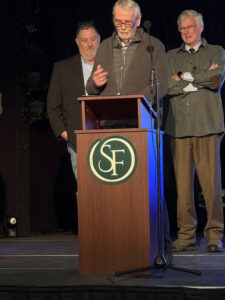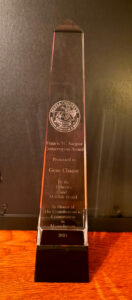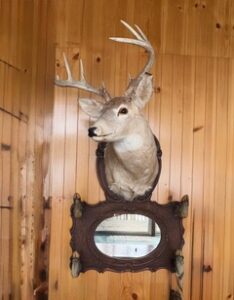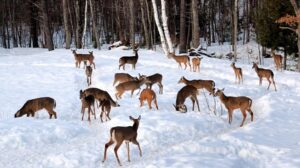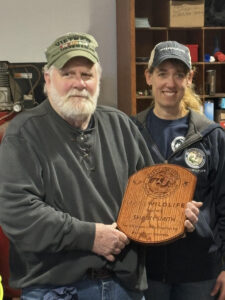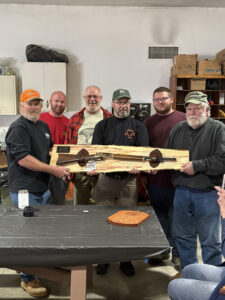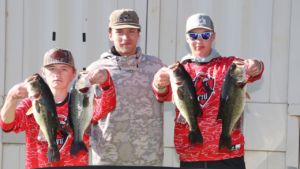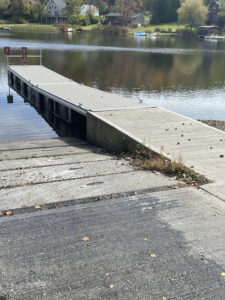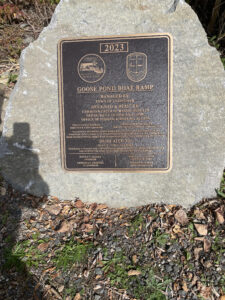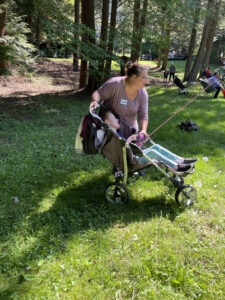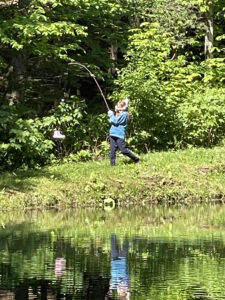As noted in my column of August 24, 2024, I am stepping down as the Berkshire Woods and Waters columnist effective year end, which means this is my last column. It has been my extreme honor to have written this weekly column for nearly 21 years. Thank you so much for taking the time to read it.
There are so many people and organizations to thank for their help over those years; The Berkshire Eagle President and Publisher Fred Rutberg, Executive Editor Kevin Moran, the sports editors – the late Brian Sullivan, Mathew Sprague, Richard Lord, Geof Smith and the current editor Mike Walsh. Howard Herman also filled in when necessary. Also, the folks behind the scene who put the newspaper together. Over the years, they made me look better than I really am.
Then there are the people who provided stuff for me to write about, the folks at the DFW Western District Office, primarily its Supervisor Andrew Madden. I was constantly pestering him and his staff for information and clarification of projects in which they were involved such as land acquisitions, regulations, pheasant/trout stockings, etc. Also, the folks at the DFW Headquarters in Westborough especially Ellie Horwitz and Marion Larson, both retired, and the current folks at Outreach & Education. They were of immense help. The Berkshire County League of Sportsmen (BCLS) was a great source of information, too. Madden made monthly reports at those meetings, which went into the Minutes. Much of that information ended up in this column. Information came regularly from the various sportsmen’s clubs and environmental organizations such as BEAT, HVA BNRC. It came from the Berkshire National Fish Hatchery, Trout Unlimited and the list goes on.
Sometimes, when the news was sparse, I would write about my personal hunting and fishing episodes. Sometimes a guest writer, such as Charles Wohl or Marc Hoechstetter would bail me out.
My wife Jan was at my side all along the way, encouraging and giving advice here and there. It was so important to have her encouragement and support over the years.
And I thank the Lord for his divine guidance.
For the last several months, as I started winding down for this day, memories of past columns filled my mind, especially on sleepless nights, and I started categorizing them:
The biggest surprise came in the early days of this column, that being the number of older ladies who read the column. I can’t tell you how many times women in their 70’s, 80’s and 90’s approached me and/or Jan to tell us that they regularly read the column. In those days, this column was smaller and was tucked away in the sports section. They really had to search to find it amidst the baseball and football coverage. Usually, they would start off by saying, “I don’t hunt or fish, but when I was a little girl, my father used to take me out fishing, etc.” Over the years I stopped hearing from them and wondered why, until it dawned on me that many have passed away.
Now, I’m hearing from younger women. In fact, just last week a woman from Hinsdale e-mailed me stating that she is “not a hunter, trapper, or fisherman, but have been a naturalist nearly all of my 82 years. And, I grew up with the father who fed his family by hunting, fishing and trapping. So, I have a great regard for those who continue to do so.”
No, I won’t refer to her as an older woman……………..she’s my age.
Another surprise was finding out that this column was being read in areas outside the Berkshires. That became obvious when I was awarded the Words of Wisdom award from the Worcester County League of Sportsmen and another award from the Massachusetts Sportsmen’s Council.
My most consequential article was in 2009 when I wrote about flyfishing with 101 year old Charles Lahey of Pittsfield. Someone contacted Jerry Gibbs, fishing editor for Outdoor Life magazine, about Lahey’s write-up. To make a long story short, Gibbs used his influence to get Charlie inducted into the Freshwater Fishing Hall of Fame (HOF) in Hayward, Wisconsin in 2009. The last time Jan and I visited the HOF, there was
Charlie’s picture proudly hanging on a wall, next to the likes of Curt Gowdy, Lee Wulff, Gadabout Gaddis, John Gierach, Isaac Walton, etc.
My favorite columns were those written about land acquisitions for conservation purposes by MassWildlife, BNRC, and others. I also liked writing about individuals who received Berkshire County League of Sportsmen awards, Trout Unlimited’s Crooked Staff awards, MassWildlife’s Francis W. Sargent Conservation Awards, and others. I loved informing the community about the wonderful accomplishments the award recipients achieved for the environment and outdoor sporting community. Articles about boat ramp renovations, school kids helping MassWildlife staff stocking trout, Steve Bateman’s Jimmy Fund fishing derbies were also my favorites. And of course, I loved writing about kids catching big fish or bagging big wild turkeys.
My most embarrassing columns were the ones where I misspelled the names of a people who had accomplished great feats. Oh, I wish I could take them back.
Most interesting columns – There were several. A couple of times I wrote about when my fishing buddy Mike Shepard and I had interesting encounters with grizzly or black bears on our fishing trips to Alberta and Quebec, not to mention the fabulous fishing we had in Labrador and Nunavut Territory, Canada. Also, those fishing trips that Paul Knauth and I took to the Catskills, the Adirondacks, and Yellowstone. Remember that epic battle I had with that big brown trout “Iron Mike” in the Catskills? Also those fishing trips with Ron Wojcik to Northern Maine to fish the West Branch of the Penobscot River for Landlocked Salmon and wild Brook Trout. I also wrote about those early fishing trips in Lenox that my lifelong pal Jerry Zink and I used to take when we were 8 or 9 years old.
My saddest columns were those written about prominent sportsmen/conservationists who passed beyond the riverbend or over the ridge. People like Ted Giddings, George ‘Gige’ Darey, Doris Moon, George Wislocki, George Hamilton, Jr., John Zuber, Joe Areno, Charles Lahey, Fred Moran, Charles Liston, Margaret Beckwith, and others…… people who mattered and did great things during their times here on earth. Two sad columns were written about the passing of two of our loving beagles – Jackson and Jacques.
My funniest column (at least in my opinion) was when I wrote about encountering a fellow fishing in a spot I wanted to fish on the Westfield River, in Chesterfield. It was about the time the movie Deliverance came out. Without him seeing me, I started playing the jaws harp…… “boing, boing, boing”. The sound frightened him so much that he scrambled out of the river and ran off down the path in his waders and dragging his fishing line behind him. Remember that? (LOL)
Columns that moved me the most were the ones dealing with the paraplegic hunts. In spite of their physical difficulties, they refused to give up their sport of hunting. What inspiration! How wonderful of those volunteers who did their utmost to ensure they had memorable or successful hunts. But the columns that moved me the most were the ones covering the Youth Outreach fishing events put on by the BCLS on Reynolds Pond. The BCLS provided opportunities for kids to fish, kids that were medically challenged, kids in wheelchairs. Kids who look like any other kids but with conditions that may very well limit their lifespans. Kids with seizure disorders, with cancer, and all kinds of different challenges. I felt so sad watching their parents/grandparents doing their best to see that they were comfortable and enjoying the event. God bless those poor little souls and their caregivers. It’s at times like those, my emotions really run close to the surface.
On every Memorial or Veteran’s Day I made sure to mention those who sacrificed so much to keep our country free, thus enabling us to enjoy our outdoor activities.
My predecessor, the late Ted Giddings, who retired after writing the Our Berkshires column for 55 years, began his last column on December 28, 2003 by asking, “Will someone kindly tell me how to say goodbye?” Giddings wrote that he continued the column for so many years because so many people relied on it for information on hunting, fishing and related environmental issues. Little did I know while reading those lines that I would be writing similar words in a goodbye column 21 years later. Ted closed his last column with the following words, “Farewell and hearty best wishes to all readers.”
“Parting is such sweet sorrow,” wrote Mr. Shakespeare. While I won’t be sharing your Saturday morning cup of coffee with you while reading this column anymore, I’m pretty sure we will meet again in a restaurant, a supermarket or someplace. Who knows, maybe we’ll meet somewhere near a babbling brook, on a deer stand, or while hiking in our beautiful Berkshire Woods and Waters.
So long dear readers, ‘til we meet again.

